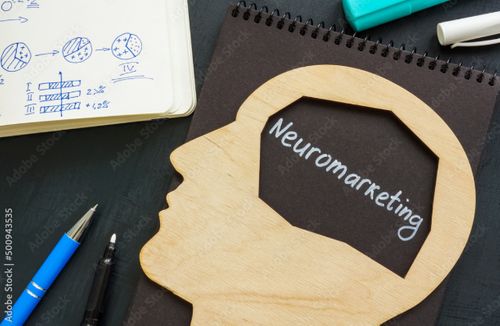How big brands use neuromarketing to make you buy
May 23, 2022 · 2 mins read
0
Share

Neuromarketing is commercial marketing that applies neuropsychology to market research. It uses medical technologies like Functional Magnetic Resonance Imaging (fMRI) and electroencephalogram (EEG) to study the brain's responses to marketing stimuli.
Save
Share
Effective packaging and emotional colours: Neuroimaging research found that customers have a negative response to shiny packaging. But it didn’t show a negative response to matt finishes. Colours play a huge role too. packhelp.com
Save
Share
The use of emotional colors will help you attract customers. One of the most infamous examples is Coca-Cola's ubiquitous use of the color red, but there are many more companies who have also used color to great effect.
Save
Share
Anchoring Bias: Neuroscientists have found that we evaluate prices based on comparison with the anchor price. So if you know that a shirt costs $15 that becomes the anchor price. Discounted or lower price than the anchor seems like a good deal. So choose your prices carefully.

Save
Share
Website Design: Neuromarketing techniques suggest you should design your website layout vertically and ditch the horizontal style. Because reading webpages from the top down engages the brain, and makes viewers more likely to keep on scrolling.
Save
Share
Familiar Headlines: Researchers at University College London found that when a familiar phrase is slightly altered, our hippocampus is activated, grabbing our attention. Surprise the brain with a little familiarity for effective marketing campaigns.
Save
Share
FOMO (Fear of missing out): Consumers hate to feel they are missing out on a bargain. Use “Framing” which means frame the advertisement in a way that makes the consumer feel they might miss out on the deal. Example: Only 5 left, buy before it’s gone.
Save
Share
Eye Gaze and a baby: Advertisements with people or particularly a baby are more effective. Eye tracking technology suggests that to make viewers focus more on the advertising content the eye gaze should be in the direction of the product.

Save
Share
Price Setting: A complex price like $19.99 makes our brains think we are making a more logical decision about a good or service which only has a rounded price like $20. Use this neuromarketing approach for price setting to tempt your consumers.
Save
Share
Final Note: Neuromarketing observes how people's brains respond to a specific ad, packaging/product design, and pricing strategies. These techniques are used by nearly all large companies. Perhaps it’s time you employed these insights in your business too.
Save
Share
0